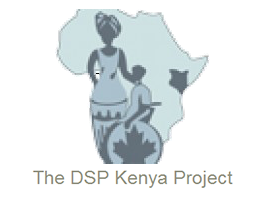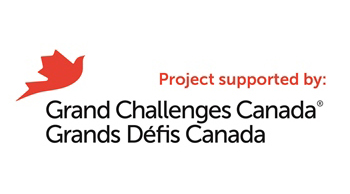3.3 – More information on the rehabilitation interventions available for people living with HIV in Sub-Saharan Africa?
- Articulation, fluency, resonance, language advice and exercises
- Assistive devices
- Auditory training
- Chest physiotherapy techniques
- Community-based rehabilitation (CBR)
- Cryotherapy
- Desensitisation techniques
- Electrotherapy modalities
- Energy conservation and pacing
- Environmental adaptation
- Ergonomic interventions
- Exercise prescription – aerobic
- Exercise prescription - pelvic floor
- Exercise prescription – strength
- Exercise prescription – stretching and passive movement
- Fatigue management
- Heat therapy
- Home-based rehabilitation (HBR)
- Massage therapy
- Neurodevelopmental therapy (NDT)
- Neurological rehabilitation
- Nutritional advice
- Pain management
- Positioning
- Psychosocial rehabilitation
- Relaxation techniques
- Return to school strategies
- Return to work strategies
- Skin care, clothing and environmental advice
- Swallowing studies and trial feeding
- Visual Loss - meal preparation, shopping and medication
- Visual loss - referrals
- Weight gain interventions
- Weight loss interventions
Articulation, fluency, resonance, language advice and exercises
Advice and exercises can be given to individuals to address challenges with speaking. These include rehabilitation to improve fluency, resonance, phonation, producing sound, intonation, variance of pitch, and voice and language, as well as aeromechanical components of respiration. Individuals may be assessed by a speech language therapist and work in collaboration with the multidisciplinary team to implement therapy.
Assistive devices
The provision of assistive devices can help people with disabilities address and adapt to their environment, promoting normal lifestyle and facilitating employment and education participation. Examples of assistive devices are mobility devices, home modification devices, respiratory devices, hearing aids, and self-care equipment. In resource-poor settings, assistive devices can range from low cost to high cost and some devices can be no cost. For example, individuals experiencing memory loss may set a reminder on their phone to alert them when medication needs to be taken. Other examples of low cost devices are spacers modified from plastic bottles or cups, which are used to administer medication for children. Cardboard boxes can also be used to make appropriate seats for infants with developmental delay. Non-governmental organisations in Africa can be a valuable source of assistive devices.
Auditory training
For auditory impairments and assistive devices, referrals should be made to an audiologist or the specific country’s association for deaf people (e.g., the South African National Deaf Association (SANDA)). Rehabilitation providers can give advice to individuals with auditory impairments, including: environmental modifications, auditory training and cued speech.
Chest physiotherapy techniques
Chest physiotherapy techniques are used to treat individuals with respiratory impairments. The goals of treatment are to mobilise secretions to clear lungs, improve the work of breathing and improve oxygenation of the lungs. There are a variety of chest physiotherapy techniques including (but not limited to) deep breathing exercises, active cycle of breathing techniques (ACBT), positioning to encourage postural drainage, and manual techniques such as percussion, vibrations and shaking. Respiratory devices such as positive expiratory pressure masks, incentive spirometers and flutter devices can be used to assist chest physiotherapy techniques.
Community-based rehabilitation (CBR)
The aim of CBR is to promote inclusion of people with disabilities, by establishing community-based programs for social integration, equalization of opportunities, and rehabilitation programs.10 Leadership in CBR is not dependent on professionals in healthcare, education, vocational or social services but involves community leaders, families and people with disabilities. It is a multi-sectoral strategy that empowers persons with disabilities to access and benefit from education, employment, health and social services. CBR is delivered within the community using predominantly local resources. CBR ranges from providing assistive devices for people with disabilities to coordinating with local schools to include vocational rehabilitation for adult education as well as family support and counselling.
Community-based rehabilitation has been shown to be beneficial for individuals with a number of impairments. For example, rehabilitation of stroke patients in the community can lead to improved recovery, with regaining of independence and improved abilities to perform activities of daily living.11 While there is a growing body of research related to CBR interventions in low and middle-income countries,12 there is limited evidence on CBR interventions for people living with HIV, particularly in sub-Saharan Africa.
It is important that rehabilitation providers are aware of community organisations operating within their local areas and collaborate with these organisations, where possible. People living with HIV throughout the world have been proactive in developing and managing community-based responses related to education, food security and advocacy efforts. Examples of these organisations in sub- Saharan Africa include the Treatment Action Campaign, The Hunger Project and Stay Alive for Us All (SAFUA), an NGO working with widows of HIV in Kenya.
Cryotherapy
Cryotherapy is the use of low temperatures such as cold water or ice to reduce pain, inflammation and spasm. In acute injuries, cryotherapy is used to promote vasoconstriction of blood vessels and reduce the effects of inflammation and cell damage. Cyrotherapy is not recommended for children under three years of age or for children with severe sensory or communication disorders.
Desensitisation techniques
Desensitisation techniques can be employed to assist people living with HIV who suffer from hypersensitivity, hyperalgesia and allodynia related to conditions such as peripheral neuropathy and polyneuropathy. These techniques include advice regarding adaptation of clothing, such as wearing seamless clothing or wearing socks inside out. Rubbing of the skin with variously textured materials (from smooth to rough) can help desensitise skin. As individuals become less sensitive, contrast bathing (the alternating use of cold and hot water bathing) can be used to treat affected areas of the body.
Electrotherapy modalities
Interferential Therapy (IFT)
IFT is the use of low frequency electrical stimulation created by the interference of two medium frequency currents passing through tissues simultaneously. These result in the stimulation of nerve endings. IFT is applied using 2-4 surface electrodes that are metal plate and pads with water-soaked sponges, carbon rubber electrodes with conducting gel, or suction cup electrodes. IFT is used to manage pain, elicit muscle contraction, decrease oedema, increase blood flow, and stimulate soft tissue healing and repair. IFT devices are becoming more portable and practitioners are able to use them easily in community settings. IFT is not recommended for use with children.
Transcutaneous electrical nerve stimulation (TENS)
TENS is a battery-operated electrical device that is used to relieve pain. It has surface electrodes (2 or more) that transfer electrical current to the surface of the skin and cause nerve stimulation. A TENS unit modulates pulse width, frequency and intensity.
There are a variety of other electrotherapy modalities that may benefit people living with HIV, including ultrasound therapy, pulsed shortwave diathermy (PSD), laser therapy and infrared therapy.
Energy conservation and pacing
Pacing and energy conservation techniques assist individuals to balance work, social and leisure pursuits by ensuring they have the necessary energy levels when required. Various strategies can be taught to people living with HIV by rehabilitation providers to achieve optimum energy levels. Education includes the collaborative setting of achievable goals, advice on the planning of errands to minimise fatigue, and teaching correct posture and biomechanics to ensure efficiency of activity. Adaptation of the physical environment can also assist with energy conservation, as can the prescription of assistive devices, where required. Rehabilitation and exercise sessions should be timed when individuals typically have the highest levels of energy and where necessary, to ensure the optimal effect of any medication (e.g., analgesics) that the individual may take prior to exercise.
Environmental adaptation
Environmental adaptation refers to changing or restructuring the environment to meet the needs of people with impairments. The change could involve home, work, community and/or study environments e.g., adapting the environment of the home to accommodate a person using a wheelchair by clearing passages and widening doorways.
Exercise
Exercise is a key strategy that may be used by people living with HIV and by rehabilitation professionals to address or prevent disability and improve or sustain the health of people living with HIV.13 Exercise is defined as any physical activity involving bodily movement produced by skeletal muscles that requires energy expenditure including (but not limited to) aerobic, resistance, flexibility and neuromotor activity beyond activities of daily living to improve and maintain physical fitness and health.14, 15
Regular exercise is widely accepted as an important part of optimal health.16 In HIV, exercise has been shown to:
- Improve cardiovascular fitness
- Increase body weight
- Improve body composition
- Increase strength
- Improve quality of life, improve mood and decrease stress
Ergonomic interventions
Ergonomics involves the re-design of the physical environment and the use of equipment to better complement the individual living within that environment. Practical examples of applying ergonomic principles include the re-positioning of furniture in the home, school and/or workplace to decrease musculoskeletal overuse injuries, and advising regular rest intervals during sustained activities. Advice on posture and biomechanics when working or studying can also reduce undue strain and fatigue. Task analysis of an individual’s daily activities can ascertain priority areas for intervention. Knowledge of one’s country’s specific occupational and safety acts is also important to ensure that employers make the necessary adaptations for all workers, particularly those who may have physical and/or cognitive impairments. Knowledge of inclusion policy within a country can also determine adaptations to be made in schools.
Exercise prescription – aerobic
Aerobic (also known as cardiovascular) exercise includes activities such as walking, jogging, stepping, swimming and cycling. Aerobic exercise has been shown to be beneficial for people living with HIV,17 including interventions conducted in sub-Saharan Africa,18, 19, 20, 21 conferring physical benefits as well as improving mental health and quality of life, and reducing symptoms of depression. These exercises can be done at little or no cost and can be performed with fellow patients, friends and family members. Although few studies investigate the role of aerobic exercise in children living with HIV, preliminary results suggest that it is an appropriate intervention provided the child is not acutely ill.
Exercise prescription - pelvic floor
Pelvic floor exercises (e.g., kegels) can be used to strengthen the muscles beneath the uterus, bladder and bowel. These exercises can be taught to men or women who have any problems with bladder or bowel incontinence. Individuals should initially be taught how to contract these muscles when the bladder and bowel are empty and then progress to building the endurance of these muscles and finally using these exercises to limit or prevent incontinence. Individuals should be encouraged to continue with these exercises even when the incontinence has resolved.
Exercise prescription – strength
Strength (or resistance) training involves exercises that overcome either internal or external forces using body weight or a variety of equipment including free weights (dumbbells and barbells), machine weights, resistance bands/tubing and hydrotherapy. When correctly taught, these exercises can improve muscle strength, power, endurance and coordination, and also improve daily functioning and quality of life. This form of exercise has been shown to be safe and beneficial for people living with HIV.22 Although few studies investigate the role of strengthening exercise in children infected with HIV, preliminary results suggest that it is an appropriate intervention if the child is not acutely ill.
Exercise prescription – stretching and passive movement
Passive movement is the movement of separate parts of an individual’s body by the rehabilitation provider or by another external force. Passive movements and stretching exercises can help improve flexibility and circulation, normalise muscle tone and reduce the risk of contractures and pressure sores. Family members and friends can be taught to assist with these exercises, providing both a therapeutic intervention as well as an opportunity for interaction and involvement with others. Static stretching exercises can be taught to individual patients while proprioceptive neuromuscular facilitation (PNF) techniques should always be instructed by a trained professional.
Fatigue management
The exercise prescription described above should incorporate principles of task analysis, pacing of activities, efficiency of tasks and the suitable timing of therapy/exercise so as to improve levels of energy, rather than exacerbate fatigue. An assessment of the workplace and home environment, including ergonomic considerations (see above), should be conducted in order to assist the individual, where possible, to conserve energy. It is also vital to assess the individuals’ nutritional requirements, so as to time exercise suitable around meals. Where individuals cannot afford adequate nutrition, as is common in many resource-poor communities, individuals should be referred to community-based/NGO feeding schemes if available.
Heat therapy
Heat therapy (also called thermotherapy) is the application of heat to the body to relieve pain. Methods of application include warm water, hot packs (hydrocollator or microwave heated), ultrasound, infrared lamp, and hot cloth. In some facilities, whirlpool baths and hot thermal wraps are available. Heat is also used to reduce joint stiffness and oedema, aid healing, and relieve muscle spasms. Great care should be taken when using heat therapy with young children, the elderly, or anyone with altered sensation.
Home-based rehabilitation (HBR)
HBR is a rehabilitation strategy that is usually coordinated by rehabilitation providers and may be supplemented by non-governmental organisations. It provides care for patients in their own homes. It is used for patients post-discharge from the acute healthcare setting or when patients are unable to access healthcare services. A review of HBR programmes demonstrated that this model can be based on evidence-based practice, support task shifting to lay personnel, enable patient-centred care and maximize function and independence of PLHIV.23 In some cases, rehabilitation providers are able to provide HBR care, but often due the scarcity of rehabilitation providers, healthcare workers and community-based carers are trained to provide HBR services. A home stimulation programme taught to the caregiver can significantly improve cognitive and motor development in young children infected with HIV. 24
Massage therapy
Massage is the use of physical techniques or manipulations such as Swedish strokes, deep tissue work, myofascial release and neuromuscular techniques. It is used to relieve pain, improve circulation, reduce oedema, increase mobility of connective tissue, relieve stress and improve quality of life. Massage is also believed to have a positive effect on immune function through stress mediation and enhanced with the use of other stress modalities.25
Neurodevelopmental therapy (NDT)
NDT therapy is typically provided by a physiotherapist, occupational therapist or speech therapist. It is used to treat children or adults with neurological disorders, and is potentially useful in treating children with HIV encephalopathy. The aim is to optimize functional abilities by improving postural tone and co-ordination. The family is very important in providing continued treatment at home.
Neurological rehabilitation
Neurological rehabilitation interventions are designed to reduce the symptoms of people with neurological impairments and improve their functional ability. These include activities to improve mobility and gait, exercises to improve movement and strength (active, passive and proprioceptive neuromuscular facilitation and neurodevelopmental therapy), techniques to minimise disorders of muscle tone (such as Bobath or Motor Relearning techniques), assistance with activities of daily living (e.g., washing, dressing, feeding), speech therapy to assist with speaking and swallowing, and advice on assistive aids to promote independence. Involvement of family and friends in this rehabilitation and the referral to community support groups, where possible, should be central to these interventions. Appropriate psychosocial interventions may also enhance the success of this form of rehabilitation.
Nutritional advice
Poor diet has a direct effect on the immune system. Advice on nutrition must be tailored to the individual and her/his circumstances. People living with HIV may suffer from weight loss or weight gain. Individuals need to eat a balanced diet with fat, carbohydrates and protein. Individuals could be advised to eat several small meals per day using what is available to supplement all food groups. Individuals may be further advised, to keep logbooks on their weight and diet, with education on warning parameters for weight loss or gain. Dieticians or nutritionists may recommend daily multivitamins. It is important however to consider possible interactions of dietary supplements and ARVs.26 Referral can be made to a dietician (when available) who may conduct a nutritional assessment, counsel individuals, or assist with food provision through referral to nutrition supports. Alternatively, rehabilitation providers can encourage people living with HIV to begin subsistence farming and set up vegetable gardens or small animal rearing projects to produce food. Any advice on nutrition must include information on adequate hydration level for each individual.
Pain management
Up to 15% of people living with HIV may develop peripheral neuropathy characterized by distal, symmetric anesthesia and/or painful dysesthesia.27 Although peripheral neuropathy is present in untreated HIV infection, exposure to Nucleoside/Nucleotide Reverse Transcriptase Inhibitors (NRTI), places individuals at an increased risk.28 Interventions to address peripheral neuropathy include transcutaneous electrical nerve stimulation (TENS) or interferential current (IFC) for symptomatic management, adapted footwear, night ankle splints and bed tents to keep sheets off of feet and desensitization techniques (e.g., rubbing hands and feet with varying textures of material).
Medication can assist in pain management, but this intervention should be directed by a qualified practitioner. Pharmacological interventions for pain include topical analgesics, opioids, non-steroidal anti-inflammatory drugs (NSAIDs) and corticosteroids.
Research also shows there is a psychological component of pain and the importance of chronic pain behavioural interventions that include treatment of depression and substance use.29Education, thus, is vital in helping minimize the experience of pain. Furthermore, aerobic exercise (see above) can also be an effective means of reducing pain. Furthermore, aerobic exercise (see above) can also be an effective means of reducing pain.30 Other non-pharmacological interventions for pain management include relaxation techniques, increased rest, balance diet, acupuncture and TENS (see above).
Positioning
Advice on positioning can be provided to individuals who may suffer from a number of impairments related to HIV. Correct positioning can help with the drainage of respiratory secretions, limit postural deformities, improve the function of individuals with neurological impairments, decrease swelling and minimise secondary complications of disuse such as pressure sores and contractures. Additional devices such as pillows, splints and gel pads can further limit these complications.
Psychosocial rehabilitation
More specialised psychological rehabilitation services can be offered by specifically trained professionals, including psychiatrists, psychologists, psychotherapists and occupational therapists. However, primary prevention, in the form of exercise, adequate nutrition and maximizing quality of life falls within the scope of all rehabilitation providers. Social support structures, such as support groups,31 friends, family, cultural, religious and other community organisations, can also provide emotional and practical support.
Relaxation techniques
Relaxation techniques (including stress reduction techniques, visualization and imagery, progressive muscle relaxation, and the use of music) can improve name and face recall, short-term memory and incidental learning, reduce anxiety and depression, and strengthen immune function. Where possible, family members, friends and caregivers should also be taught these techniques as they have been shown to increase caregivers’ self-efficacy. Singing and rocking infants and small children can be very effective in promoting relaxation.
Return to school strategies
These strategies are similar to those discussed in Return to Work Strategies (see below). The rehabilitation provider can work together with the child, family and educators to prepare a child for return to school. This is particularly important after long absences, when the child has been extremely ill, or is returning with a new disability. The peers of the returning child should be prepared and given strategies to support their friend.
Return to work strategies
Return to work strategies are aimed at rehabilitating people with impairments to facilitate their return to work. It prepares both the employer and employee for what is involved in their return so optimal function is resumed. The employer and employee work together to tailor the work to suit the needs of the employee. The rehabilitation provider, employee and employer work hand in hand to develop and implement strategies for return to work. All employees should be trained to prevent injury and provide an environment that is supportive toward people living with disabilities.
Skin care, clothing and environmental advice
Individuals living with HIV in sub-Saharan Africa need advice on environmental influences on skin. Direct sun avoidance during high intense midday sun (i.e., 10 am to 3 pm) is essential. Individuals should be advised to plan outdoor activities around these times. Protective clothing (sunglasses, long sleeved shirts and pants that block the sun, broad brimmed hats) needs to be worn to protect the skin from the harsh climate in SSA. Dermatologically tested sun care products with a Sun Protection Factor (SPF) that is tailored to suit individual needs should be used to protect the skin from sun damage. Some medication can increase the risk of skin sensitivity and sun damage, making prevention even more important.
Swallowing studies and trial feeding
Swallowing studies and trial feeding as directed by a speech-language therapist in collaboration with the wider healthcare team, are typically used to ensure a nutritionally adequate diet for people living with HIV based on texture and consistency. They can also assist in evaluating an individuals’ ability to safely ingest oral food.
Visual loss - meal preparation, shopping and medication
Individuals with visual impairments and visual loss can be assisted with advice and education on meal preparation such as organizing work space and materials, adequately labeling dials and controls on appliances and, with the assistance of occupational therapists, on the safe use of assistive devices with kitchen utensils.
Similarly, shopping can be made easier by organizing lists according to store layout, asking store personnel for assistance, contacting caregivers to assist with shopping, getting items delivered, and using magnifiers or penlights for reading labels.
Individuals can be educated about administration of medication by organizing them by time of day, identifying containers by shape and size, or using elastic bands, magnetic tape, coloured tape, or marked contrasts in labels. The local pharmacy can also assist with alternative packaging (e.g., bubble packs).
Visual loss - referrals
For visual loss and assistive devices, referrals can be made to the specific country’s association for blind/visually impaired people (e.g., The South African National Council for the Blind (SANCB)).
Rehabilitation providers can give advice to individuals with visual impairments, including: ensuring the physical environment is free from obstacles, ergonomic advice, organising clothing according to texture, and advice on food storage and meal preparation. Support should be provided for visually impaired children returning to school.
Weight gain interventions
Individuals suffering from acute digestive and endocrine-related impairments should be referred for appropriate medical care. There are rehabilitation interventions that can assist individuals who want to put on weight, including: exercise (particularly strength training to build muscle mass), nutrition, rehydration and supplementation. Referral to community feeding schemes may be necessary in instances where individuals cannot afford adequate nutrition. Psychosocial rehabilitation or referral may be necessary when excessive weight loss is primarily related to psychological causes.
Weight loss interventions
Individuals suffering from acute digestive and endocrine-related impairments should be referred for appropriate medical care. There are rehabilitation interventions that can assist individuals who want to lose weight, including: exercise (particularly aerobic exercise to facilitate weight loss) and dietary advice. Referrals to community feeding schemes may be required for individuals who cannot afford alternatives to low-cost, high-caloric foods.
Characteristic features of protease inhibitor-associated lipodystrophy include increases in abdominal visceral adipose tissue, loss of facial fat, development of dorsocervical and supraclavicular fat pads and enlargement around the breasts in women.32 Adipose cells are not lost but are redistributed to areas around the viscera and within blood vessels. This redistribution, in addition to elevated triglycerides, increases the risk of developing cardiovascular disease and its complications. A combination of aerobic and strength exercise has proven beneficial in reducing the effects of body fat redistribution and improving the quality of lives of people living with HIV and this condition.18,19
10Iemmi et al. Community-Based Rehabilitation for People with Disabilities in Low- and Middle- Income Countries. 2014 Available at: www.campbellcollaboration.org/lib/download/2591
11Walker M, Sunnerhagen K and Fischer R. Evidence-based community stroke rehabilitation. Stroke. 2013:44:293-297.
12Cleaver S and Nixon SA. A scoping review of 10 years of published literature on community- based rehabilitation. Disabil Rehabil. 2014;36(17):1385-94 doi10.3109/09638288.2013.845257.
13Botros D, Somarriba G, Neri D, Miller TL. Interventions to address chronic disease and HIV: strategies to promote exercise and nutrition among HIV-infected individuals. Curr HIV/AIDS Rep. 2012 Dec;9(4):351-63. doi: 10.1007/s11904-012-0135-7. Review. PubMed PMID: 22933247; PubMed Central PMCID: PMC3492509.
14Garber CE, Blissmer B, Deschenes MR, Franklin BA, Lamonte MJ, Lee IM, Nieman DC, Swain DP: American College of Sports Medicine position stand. Quantity and quality of exercise for developing and maintaining cardiorespiratory, musculoskeletal, and neuromotor fitness in apparently healthy adults: guidance for prescribing exercise. Med Sci Sports Exerc 2011, 43:1334-1359.
15 World Health Organization (WHO). Health Topics: Physical Activity http://www.who.int/topics/physical_activity/en/ n.d. Accessed Jan 10, 2015.
16Stuart M, Chard S, Benvenuti F, Steinwachs S. Community exercise: a vital component to healthy aging. Healthc Pap. 2009;10(1):23-8; discussion 79-83. Review. PubMed PMID: 20057213. http://www.ncbi.nlm.nih.gov/pubmed/20057213.
17O'Brien KK, Tynan AM, Nixon SA, Glazier RH. Effectiveness of aerobic exercise for adults living with HIV: systematic review and meta-analysis using the Cochrane Collaboration protocol. BMC Infect Dis. 2016 Apr 26;16:182. doi: 10.1186/s12879-016-1478-2. PubMed PMID: 27112335; PubMed Central PMCID:PMC4845358.
18Mutimura E, Stewart A, Crowther NJ, Yarasheski KE and Todd Cade W. The effects of exercise training on quality of life in HAART-treated HIV-positive Rwandan subjects with body fat redistribution. Quality of Life Research. 2008a:17:377–385.
19Mutimura E, Crowther NJ, Todd Cade W, Yarasheski KE, and Stewart A. Exercise reduces central adiposity and improves metabolic indices in HAART-treated HIV-positive subjects in Rwanda: a randomized controlled trial. AIDS Research. 2008b: 24:15-23.
20Maharaj SS, Chetty V: Rehabilitation program for the quality of life for individuals on highly active antiretroviral therapy in KwaZulu-Natal, South Africa: a short report. Int J Rehabil Res 2011, 34:360-365.
21Roos R, Myezwa H, van Aswegen H, Musenge E: Effects of an education and home-based pedometer walking program on ischemic heart disease risk factors in people infected with HIV: a randomized trial. J Acquir Immune Defic Syndr 2014, 67:268-276.
22O'Brien KK, Tynan AM, Nixon SA, Glazier RH. Effectiveness of Progressive Resistive Exercise (PRE) in the context of HIV: systematic review and meta-analysis using the Cochrane Collaboration protocol. BMC Infect Dis. 2017 Apr 12;17(1):268. doi: 10.1186/s12879-017-2342-8. Review. PubMed PMID: 28403830; PubMed Central PMCID: PMC5389006.
23Cobbing S, Hanass-Hancock J, Myezwa H. Home-based rehabilitation interventions for adults living with HIV: a scoping review. Afr J AIDS Res. 2016;15(1):77-88. doi: 10.2989/16085906.2016.1159968. Review. PubMed PMID: 27002360.
24Potterton J, Stewart A, Cooper P, Becker P. The effect of a basic home stimulation programme on the development of young children infected with HIV. Developmental Medicine & Child Neurology 2010 Jun;52(6): 547-551.
25Hillier SL, Louw Q, Morris L, Uwimana J, Statham S. Massage therapy for people with HIV/ AIDS (Review). The Cochrane Library. 2009. Available at: http://www.thecochranelibrary.com
26Jalloh MA, Gregory PJ, Hein D, Risoldi Cochrane Z, Rodriguez A. Dietary supplement interactions with antiretrovirals: a systematic review. Int J STD AIDS. 2017 Jan;28(1):4-15. doi: .1177/0956462416671087. Epub 2016 Sep 27. Review. PubMed PMID: 27655839.
27Keswani SC, Pardo CA, Cherry CL, Hoke A, McArthur JC. HIV-associated sensory neuropathies. AIDS. 2002 Nov 8;16(16):2105-17.
28 Hulgan T, Haas DW, Haines JL, Ritchie MD, Robbins GK, Shafer RW, Clifford DB, Kallianpur AR, Summar M, Canter JA. Mitochondrial haplogroups and peripheral neuropathy during antiretroviral therapy: an adult AIDS clinical trials group study. Aids. 2005 Sep 2;19(13):1341-9.
29Merlin JS1, Walcott M2, Ritchie C3, Herbey I2, Kertesz SG4, Chamot E5, Saag M2, Turan JM5. 'Two pains together': patient perspectives on psychological aspects of chronic pain while living with HIV. PLoS One. 2014. Nov 3;9(11):e111765. doi: 10.1371/journal.pone.0111765. eCollection. http://journals.plos.org/plosone/article?id=10.1371/journal.pone.0111765
30Maharaj SS, Yakasai AM. 2018. Does a Rehabilitation Program of Aerobic and Progressive Resisted Exercises Influence HIV-Induced Distal Neuropathic Pain? Am Journal of Physical Medicine and Rehabilitation. 97(5):364-369
31van der Heijden I, Abrahams N, Sinclair D. Psychosocial group interventions to improve psychological well-being in adults living with HIV. Cochrane Database Syst Rev. 2017 Mar 14;3:CD010806. doi: 10.1002/14651858.CD010806.pub2. Review. PubMed PMID: 28291302; PubMed Central PMCID: PMC5461871.
32Yanovski JA, Miller KD, Kino T, Friedman TC, Chrousos GP, Tsigos C, Falloon J. Endocrine and metabolic evaluation of human immunodeficiency virus-infected patients with evidence of protease inhibitor-associated lipodystrophy. J Clin Endocrinol Metab. 1999 Jun;84(6):1925-31.

 Previous Page
Previous Page




